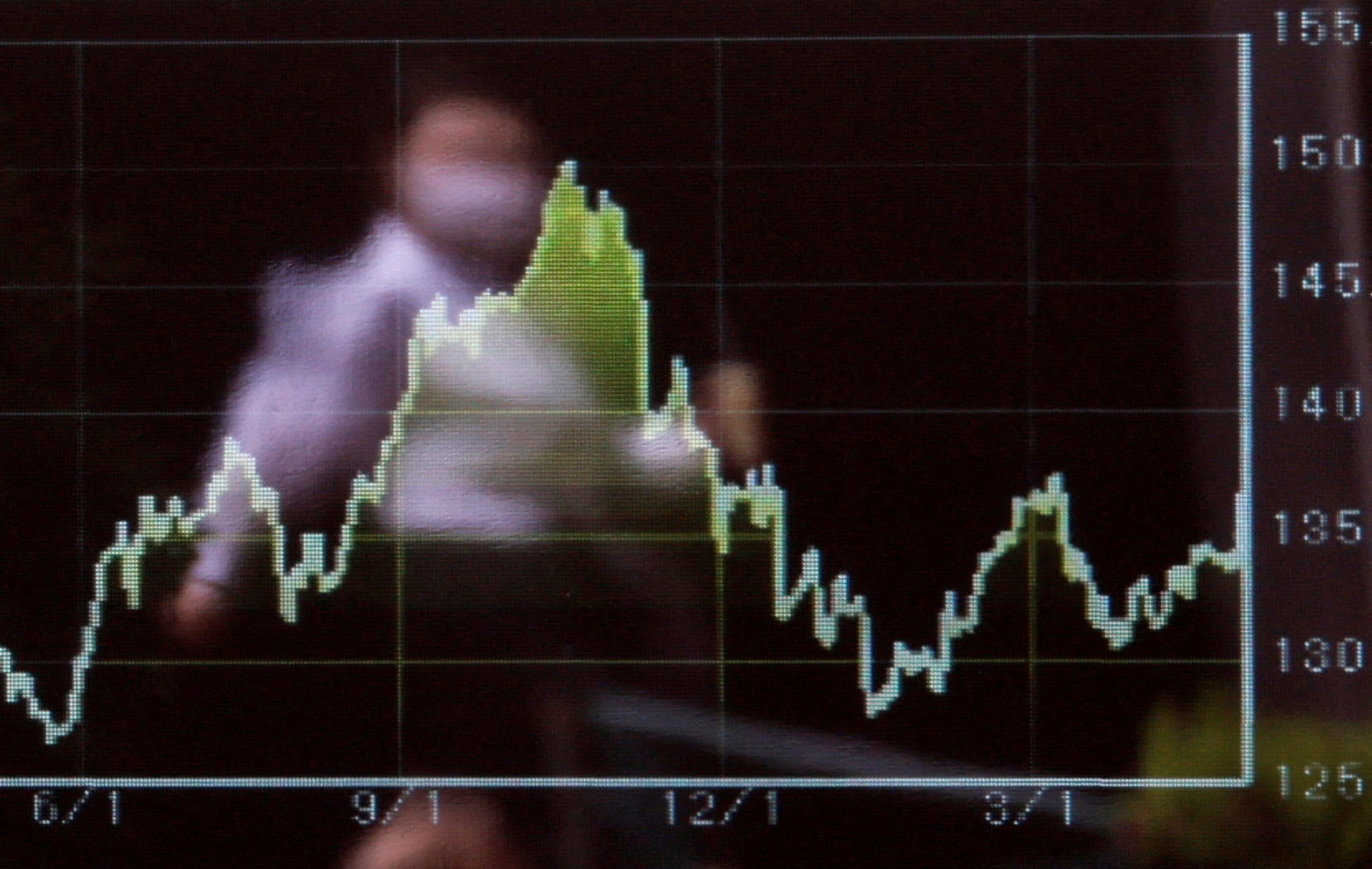Europe’s stocks eke out gains, yen lurks near 150

A passerby is reflected on an electric monitor displaying the graph of recent moments of the Japanese yen exchange rate against the U.S. dollar outside a brokerage in Tokyo, Japan May 2, 2023. REUTERS/Issei Kato/File photo Acquire Licensing Rights
LONDON, Oct 2 (Reuters) – Europe’s markets looked to put a testing Q3 behind them on Monday, with both stocks and the euro ticking sideways, bond markets steady and a last-minute deal to avert a U.S. government shutdown lifting Wall Street futures.
A fractional 0.2% move higher from the pan-European STOXX 600 (.STOXX) in the face of some difficult data gave traders early hope the region could score its first three-session run of back-to-back gains since mid-August.
It had lost 2.5% in Q3 amid a sharp rise in oil prices and global borrowing costs and updated euro zone September PMI data – seen as a key indicator of economic health – showed manufacturing activity remains in a broad-based downturn.
It was enough to nudge the euro back into the red for the day after it, like many of the major global currencies, had fallen over 3% in Q3 unable to fend off the U.S. dollar’s irresistible strength. /FRX
Markets in China, Hong Kong and India had been closed for holidays but Tokyo’s open-for-business Nikkei (.N225) jumped as much as 1.7% as the yen dribbled back towards 150-per-dollar, a weakness viewed as a boon for Japan’s exporters.
“We have had two big risk-off months and you have a risk-on event with the (U.S. government) shutdown being postponed but the 10-year Treasury is at 4.62% and the yen in near 150 so nothing has really changed,” said Societe Generale analyst Kit Juckes.
Marginally higher oil prices and debt pressures meant benchmark European government bond yields were also edging higher again, with Germany’s 10-year Bund level within striking distance of a 12-year high 2.86% hit late last week.
The eleventh-hour deal to avoid a U.S. government shutdown, struck over the weekend, lifted U.S. stock futures by 0.5% in Europe.
The stopgap funding bill allowed the government to keep operating through Nov. 17, and means key data releases including Friday’s monthly payrolls report can go ahead on time.
“The shutdown risks are only delayed, not eliminated,” TD Securities strategists wrote.
“A sense of reduced uncertainty is likely to drive a small relief in markets,” but “market volatility is likely to remain elevated as investors wait for the next catalyst, which is likely to be top-tier data.”
Japanese stocks had also been boosted by the Bank of Japan’s quarterly Tankan survey overnight, which showed an improvement in business sentiment although the World Bank became the latest to trim its forecast for China’s economy next year.
Chinese data released over the weekend had also delivered mixed messages.
Sunday’s Caixin/S&P Global PMI survey had shown the pace of growth in the key manufacturing sector slowing again whereas government PMI figures a day earlier had reported the first pick-up in activity in six months.
DOLLAR RESILIENCE
Bond and foreign exchange trade remains driven by an anticipation of U.S. interest rates staying high and selling in Japanese bonds on Monday drew a central bank response.
As well as the gains in Europe, 10-year Japanese government bond yields rose by a basis point to their highest for a decade at 0.775%. The Bank of Japan said it will buy bonds with 5-10 years to maturity on Wednesday, with the size of purchases to be announced then. Futures bounced on the news.
In the Treasury market, 10-year yields rose 4 bps to 4.6124% and the two-year yield rose 3.7 bps to $5.0832%.
The dollar was still standing strong in currency markets, though was stopped short of last week’s milestone highs save for against the yen , where it hit its highest since last October at 149.74 yen.
“Relative U.S. growth resilience and (a) hawkish Fed are factors that continue to underpin support for the dollar, until U.S. data starts to show more material signs of softening,” said OCBC currency strategist Christopher Wong.
Mixed China factory surveys and an expectation of no changes to rates settings at central bank meetings in the coming days kept pressure on the Australian and New Zealand dollars.
The Aussie fell as much 0.5% to $0.6400 and the kiwi slipped 0.2% to $0.5986. The euro was a touch weaker at $1.0564, as was sterling at $1.2188.
Crude oil steadied after late-week falls
Brent December crude futures rose 27 cents, or 0.3%, to $92.50 a barrel. U.S. West Texas Intermediate crude futures gained 20 cents, or 0.1%, to $90.99 a barrel. Gold was 0.3% lower at $1,841 an ounce.
Addtional reporting by Kevin Buckland in Tokyo; Editing by Nick Macfie
Our Standards:…
Read More: Europe’s stocks eke out gains, yen lurks near 150

